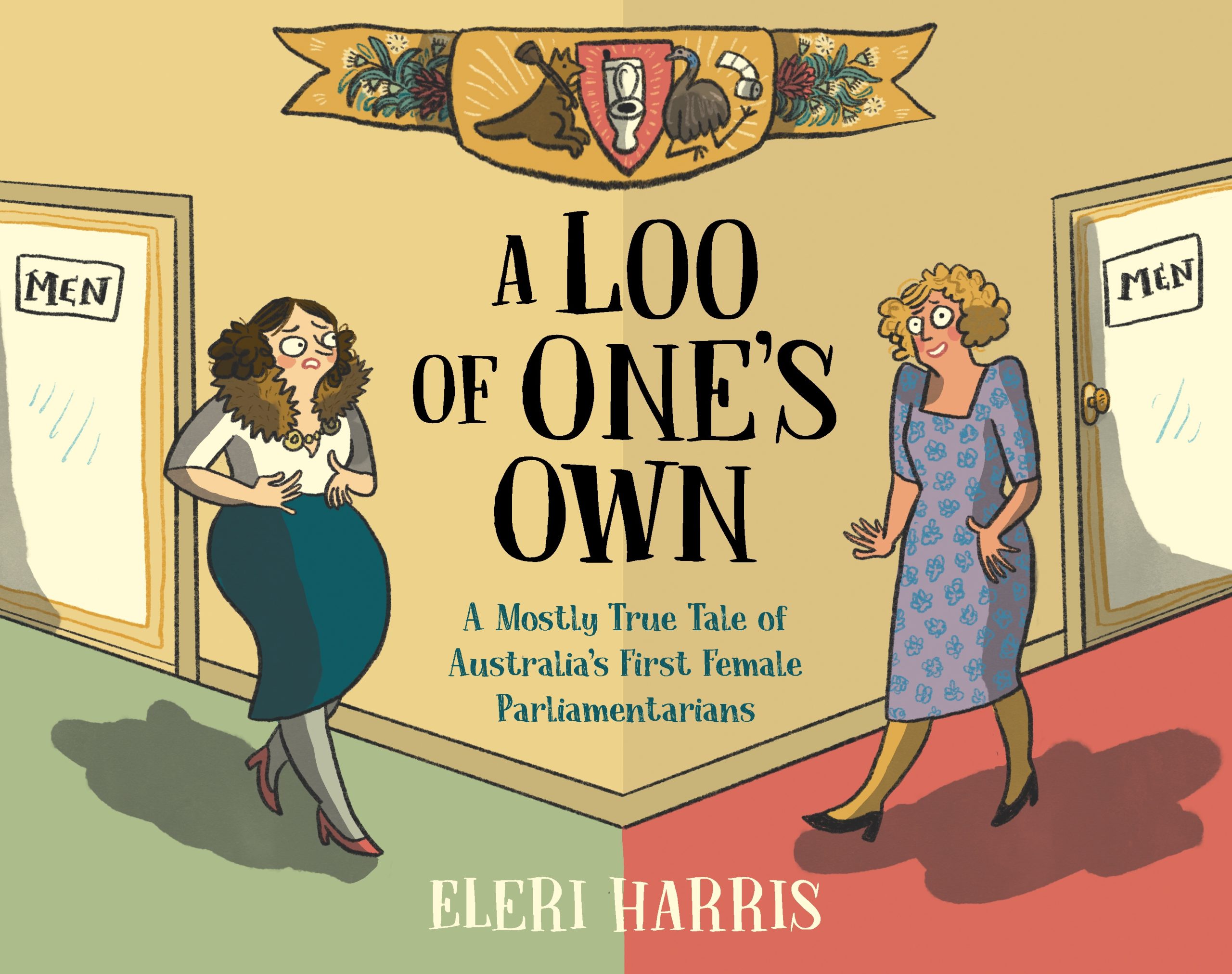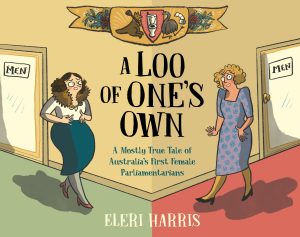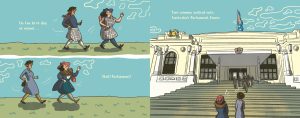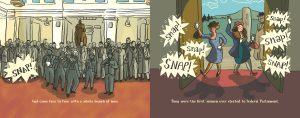





 For those two women were the first women elected to Federal Parliament! The women were very different, coming from opposite sides of the political and social divide. Labor Party Senator Dorothy Tangney was described as “‘Jolly’”. United Australia Party House of Representatives MP Enid Lyons was described as “‘Wholesome’”. Biographical back matter describes Dame Enid Lyons as the widow of Prime Minister Joseph Lyons, who died while in office in 1939. They had twelve children together and she played a lead role in his campaigns. He acknowledged that she played an important role in his political career. Dame Dorothy Tangney was a career politician, founding the Labor Club at the University of Western Australia and advocating for women, children and First Nations people. The women dressed differently according to their social class: Enid in fur and pearls and Dorothy in a floral frock.
For those two women were the first women elected to Federal Parliament! The women were very different, coming from opposite sides of the political and social divide. Labor Party Senator Dorothy Tangney was described as “‘Jolly’”. United Australia Party House of Representatives MP Enid Lyons was described as “‘Wholesome’”. Biographical back matter describes Dame Enid Lyons as the widow of Prime Minister Joseph Lyons, who died while in office in 1939. They had twelve children together and she played a lead role in his campaigns. He acknowledged that she played an important role in his political career. Dame Dorothy Tangney was a career politician, founding the Labor Club at the University of Western Australia and advocating for women, children and First Nations people. The women dressed differently according to their social class: Enid in fur and pearls and Dorothy in a floral frock. Harris’s picture book is like a high-visibility version of an extended comic strip or short graphic novel. Each page acts as a comic panel, with some containing a single image and others containing a mix of text and smaller sub-panels. Most pages contain images that can be seen quite clearly from the back of a room, making the book ideal for classroom use. Its landscape format allows some clever artistic decisions by Harris. For example, the end pages are an aerial plan of Parliament House, with the chamber and offices of the House of Representatives on the left and those of the Senate on the right, with the King’s Hall in between. On tours of the new Parliament House, guides talk about how the eucalyptus green of the former and ochre red of the latter were consciously chosen, to differentiate the colony from the British parliament, with its deep bottle greens and rich heritage reds. Similarly, the textures inside the building are more rough and “natural” than the formal high polished oak and leather of the British Houses of Lords and Commons. In this regard, the textured matte paper is a perfect choice.
Harris’s picture book is like a high-visibility version of an extended comic strip or short graphic novel. Each page acts as a comic panel, with some containing a single image and others containing a mix of text and smaller sub-panels. Most pages contain images that can be seen quite clearly from the back of a room, making the book ideal for classroom use. Its landscape format allows some clever artistic decisions by Harris. For example, the end pages are an aerial plan of Parliament House, with the chamber and offices of the House of Representatives on the left and those of the Senate on the right, with the King’s Hall in between. On tours of the new Parliament House, guides talk about how the eucalyptus green of the former and ochre red of the latter were consciously chosen, to differentiate the colony from the British parliament, with its deep bottle greens and rich heritage reds. Similarly, the textures inside the building are more rough and “natural” than the formal high polished oak and leather of the British Houses of Lords and Commons. In this regard, the textured matte paper is a perfect choice. Zewlan Moor is the author of Nothing Alike and The Bill Dup
Zewlan Moor is the author of Nothing Alike and The Bill DupError: Contact form not found.
